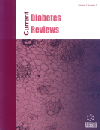
Full text loading...
We use cookies to track usage and preferences.I Understand
The global incidence of type 2 diabetes (T2D) persists at epidemic proportions. Early diagnosis and/or preventive efforts are critical to attenuate the multi-systemic clinical manifestation and consequent healthcare burden. Despite enormous strides in the understanding of pathophysiology and on-going therapeutic development, effectiveness and access are persistent limitations. Among the greatest challenges, the extensive research efforts have not promulgated reliable predictive biomarkers for early detection and risk assessment. The emerging fields of multi-omics combined with machine learning (ML) and augmented intelligence (AI) have profoundly impacted the capacity for predictive, preventive, and personalized medicine.
This paper explores the current challenges associated with the identification of predictive biomarkers for T2D and discusses potential actionable solutions for biomarker identification and validation.
The articles included were collected from PubMed queries. The selected topics of inquiry represented a wide range of themes in diabetes biomarker prediction and prognosis.
The current criteria and cutoffs for T2D diagnosis are not optimal nor consider a myriad of contributing factors in terms of early detection. There is an opportunity to leverage AI and ML to significantly enhance the understanding of the underlying mechanisms of the disease and identify prognostic biomarkers. The innovative technologies being developed by GATC are expected to play a crucial role in this pursuit via algorithm training and validation, enabling comprehensive and in-depth analysis of complex biological systems.
GATC is an emerging leader guiding the establishment of a systems approach towards research and predictive, personalized medicine. The integration of these technologies with clinical data can contribute to a more comprehensive understanding of T2D, paving the way for precision medicine approaches and improved patient outcomes.

Article metrics loading...

Full text loading...
References


Data & Media loading...

